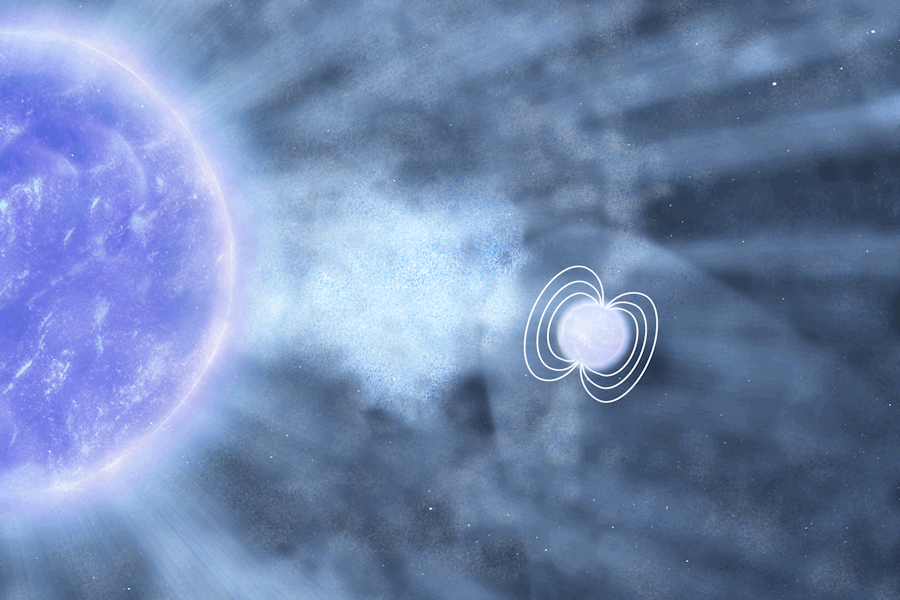
 Credit: ESA/AOES Medialab
Credit: ESA/AOES Medialab
Clumps in the Wind
Supergiant X-ray binary systems consist of a neutron star and a massive, evolved, normal type blue supergiant star. The supergiant star is so bright that it drives a strong stellar wind from its surface out into space. Portions of that wind pass by the neutron star and rain down upon its surface, releasing an enormous amount of energy and generating strong X-ray emission. Some of these systems, the so-called Supergiant Fast X-ray Transients (SFXTs), show X-ray flares which last a few hours, which probably indicates accretion of a surprisingly dense amount of wind. Detailed observations of this process are difficult to obtaind since these flares occur sporadically. But lucky astronomers observing one such SXFT called IGR J18410-0535 with the XMM-Newton X-ray observatory saw a strong X-ray flare from the system. XMM-Newton's sensitivity provided the best details of the accretion process and indicated that the neutron star in this system must have swallowed a moon-msssed size clump. The image above is an artist's rendition of such a wind clump heading toward its eventual demise at the neutron star, a dramatic, animated process. Understanding the properties of these wind clumps aid astronomers in understanding how the supergiant component loses mass on its way to becoming, one day, a neutron star in its own right.
Published: July 11, 2011
<
HEA Dictionary ● Archive
● Search HEAPOW
● Other Languages
● HEAPOW on Facebook
● Download all Images
● Education ● HEAD
>

Each week the HEASARC
brings you new, exciting and beautiful images from X-ray and Gamma ray
astronomy. Check back each week and be sure to check out the HEAPOW archive!
Page Author: Dr. Michael F. Corcoran
Last modified Monday, 26-Feb-2024 17:23:00 EST


